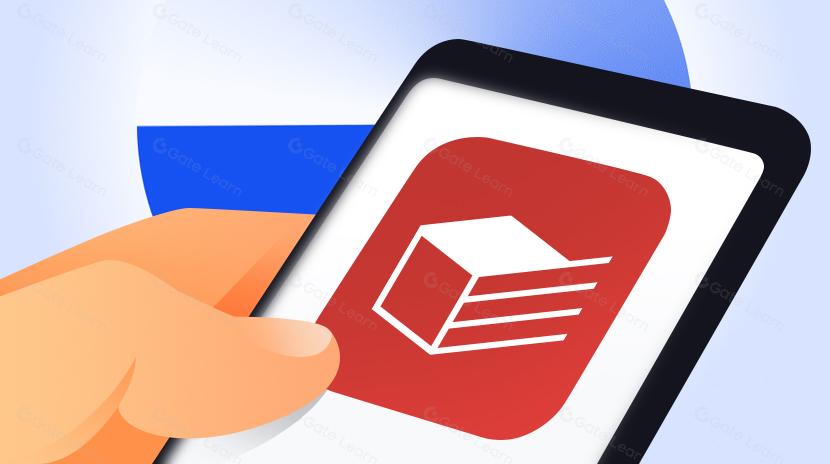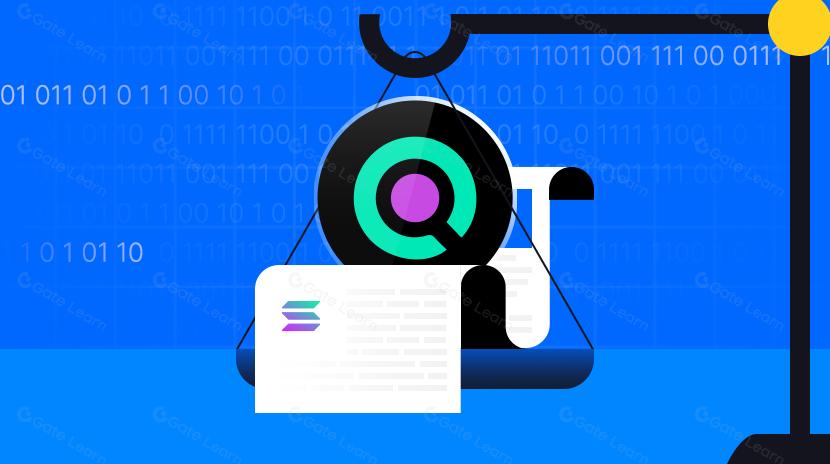Обзор BitChat: Новый проект основателя Twitter — «twttr» момент для зашифрованного общения?

Двадцать лет спустя основатель Twitter Джек Дорси возвращается с новым продуктом, bitchat, в минималистичном стиле.
Летом 2006 года мобильный интернет все еще был новым термином, а телефоны с базовыми функциями были основными устройствами в руках людей, при этом SMS были наиболее удобной формой «мобильного общения». В то время родился проект под кодовым названием «twttr». Он начался с массовой рассылки SMS, используя крайне простые ограничения по символам и самый базовый протокол вещания, что впервые сделало возможным «говорить со всем миром в любое время и в любом месте».
В этом убогом офисе команда основателей страстно обсуждала функциональные детали, в то время как Джек Дорси, который тогда еще был просто студентом университета, сидел среди них. Он превратил свои идеалы общения в реальность, используя самый простой технический подход. Вскоре после этого twttr быстро вырос в Twitter — продукт, который в корне изменил глобальную социальную экосистему.
В этот день в 2025 году время прошло, и технологии и мир изменились кардинально. Wi-Fi сигналы повсюду в городе, а 5G объединил все в одну большую сеть. Тем не менее, суть социального взаимодействия не изменилась: мы по-прежнему стремимся к общению, которое свободно, подлинно и без посредников. Однако реальность не всегда приятна; сетевые слепые зоны, сбои платформ и утечки данных могут произойти в любое время и в любом месте. Новый Twitter не только изменил свой логотип и название, но и был преобразован в совершенно новую форму благодаря Маску.
Джек Дорси, легендарная фигура, которая когда-то одновременно управляла двумя публичными компаниями стоимостью более 5 миллиардов долларов, давно покинул Twitter, чтобы сосредоточить свои усилия на индустрии шифрования и разработке Block. Однако он не полностью оставил свою любовь к социальным сетям. Как юноша, возвращающийся к разработке проекта "twttr" в 2006 году, он провел обычные выходные, кодируя всю ночь спонтанно, и создал новый минималистичный социальный продукт — bitchat.
Единственное отличие в том, что bitchat больше соответствует убеждениям Джека Дорси в минималистичных протоколах, децентрализованной коммуникации и свободе информации, чем "twttr".

Основные характеристики
Когда вы находитесь в походе, на кемпинге или занимаетесь горными активностями на свежем воздухе без мобильного сигнала, возникает необходимость делиться местоположениями и искать экстренную помощь; на музыкальных фестивалях, концертах, спортивных мероприятиях, комикс-конвенциях и других многолюдных местах, где сети часто перегружены, легко создать временную чат-сеть с компаньонами; во время внезапных бедствий, отключений электроэнергии, перебоев в интернете или экстремальных погодных условий спасательные команды, волонтеры или жители могут установить экстренные коммуникационные сети; в социальных движениях, на местах протестов, в чувствительных дискуссиях и в других средах, где необходимо защищать частную жизнь, отслеживание участников становится сложной задачей; или в закрытых помещениях, таких как университеты, летние лагеря, исследовательские группы или встречи гиков, максимизация мозгового штурма имеет решающее значение… В этих сценариях bitchat - хороший выбор.
Самая большая особенность bitchat заключается в том, что он полностью не зависит от какой-либо инфраструктуры - ни серверов, ни Wi-Fi, ни мобильных сигналов. Каждый телефон выступает как "приемопередатчик" и "ретрансляционная станция", обнаруживая друг друга с помощью Bluetooth Low Energy (BLE).
Причина привлечения криптоиндустрии заключается в том, что все сообщения шифруются от конца до конца. Во время личных чатов используются такие технологии шифрования, как X25519+AES-256-GCM, а групповые чаты также могут быть защищены паролем, позволяя видеть содержимое только тем, кто знает пароль. Сообщения хранятся только локально и автоматически исчезают при выходе или выключении, не оставляя следов в фоновом режиме.
В отличие от других продуктов шифрованной связи, bitchat полностью отказывается от действия "входа в систему"; нет необходимости в номере телефона, электронной почте или длинной строке ключей. Каждый раз, когда вы выходите в сеть, генерируется случайный "идентификатор пользователя", который также можно изменить в любое время, так что не нужно беспокоиться о том, что вас отслеживают.
практический опыт
Скачайте и установите bitchat
Скопируйте и откройте следующий адрес в веб-браузере iPhone:https://github.com/jackjackbits/bitchat.
Найдите запись приглашения TestFlight на странице и нажмите «Просмотреть в App Store», чтобы перейти к TestFlight. Если вы еще не установили TestFlight, вам будет автоматически предложено его скачать. После завершения установки вернитесь на страницу приглашения, и вы увидите бета-версию «bitchat mesh».
Чтобы установить bitchat в TestFlight, нажмите кнопку "Установить". Вы увидите простую страницу информации о приложении. Процесс установки занимает около 5-10 секунд, подождите, пока кнопка не изменится с "Установить" на "Открыть".

После открытия bitchat система выведет запрос на разрешение "Разрешить 'bitchat' находить устройства Bluetooth?" Содержимое подсказки: bitchat использует Bluetooth для создания безопасной сетевой ячейки для общения с ближайшими пользователями. Нажмите "Разрешить", чтобы позволить bitchat сканировать и подключаться к окружающим устройствам в фоновом режиме, обеспечивая нормальную работу функции передачи сообщений.
Поскольку он все еще находится на стадии тестирования, вам будет предложено поделиться отзывами с разработчиками; просто нажмите «Далее», чтобы пропустить. Наконец, нажмите «Начать тест», чтобы войти в главный интерфейс bitchat.

Совет: Убедитесь, что Bluetooth на вашем телефоне включен и что TestFlight разрешено работать в фоновом режиме, иначе вы не сможете найти устройства близких друзей.
Вы можете заметить, что bitchat вообще не имеет процесса входа; вы можете начать использовать его сразу после загрузки. В bitchat каждое общение анонимно и неотслеживаемо — ни номер телефона, ни электронная почта, ни регистрация не требуются. Вы можете изменить свой псевдоним в любое время. Этот механизм максимально защищает конфиденциальность пользователей, позволяя вам не беспокоиться о том, что вас можно будет отследить до вашей личности в чувствительных ситуациях или особых контекстах.

В верхней части страницы, в области bitchat* @ текущего ID, вы можете изменить свой ID в любое время. Нажмите на имя после @, чтобы напрямую отредактировать и сохранить новый ID. Новый ID вступит в силу немедленно и будет отображаться в списке друзей и заголовке сообщений всех друзей в одной комнате.
Конфиденциальный чат с незаметным сквозным шифрованием
После использования bitchat в течение некоторого времени вы заметите, что основной интерфейс постоянно выводит статус онлайн (подключен) и оффлайн (отключен) различных устройств, а также журналы разговоров, каждая запись перед которой стоит временная метка.
Чтобы предотвратить атаки «временного анализа», bitchat добавит дополнительную случайную задержку от 50 до 500 миллисекунд после всех операций. Это не только фиксирует время, но и помогает предотвратить «перехват пакетов»; сетевой трафик не будет полностью соответствовать вашему фактическому времени операции, что также может помочь предотвратить отслеживание личности в чувствительных ситуациях или особых сценариях.
bitchat поддерживает истинное сквозное шифрование, что означает, что только вы и другая сторона (или члены группы) могут читать каждое сообщение, и даже устройства передачи не могут его расшифровать. Независимо от того, частный чат или групповой чат, содержание остается безопасным и конфиденциальным и не может быть перехвачено платформой или третьими сторонами.

Посмотрите в верхний правый угол страницы, там есть значок маленького человечка. Нажав на него, вы увидите список всех текущих онлайн-участников: зеленая точка означает, что они онлайн, а серый крестик указывает, что они только что вышли из сети. Для часто общающихся или важных контактов нажмите на ☆ звезду рядом с их именем, чтобы «добавить в избранное». После добавления в избранное перед этим контактом появится звезда для легкого распознавания в следующий раз.
В онлайн-списке мы нажимаем на «Сяо Шуай», чтобы войти в окно приватного чата — в этот момент количество непрочитанных сообщений будет отображаться над его устройством.
В это время Сяошуай открывает уведомление и видит, что отправитель «@BlockBeats> После этого вы сможете просмотреть полную историю чата. Приватные чаты также защищены сквозным шифрованием, и содержание разговора не может быть расшифровано путем наблюдения за узлами. Все сообщения здесь также будут иметь случайные временные искажения в метках времени, чтобы обеспечить конфиденциальность и защиту от анализа трафика.

Создание комнаты и другие расширенные команды
На данный момент возникает вопрос: приватность открытых разговоров не так уж хороша. Предположим, мы хотим провести частный разговор между несколькими людьми, как нам это сделать?
В любое время просто введите / в поле ввода, и полный список команд появится внизу экрана:
Например, /j соответствует: Присоединиться к комнате или создать её. Если указанная комната уже существует, вы присоединитесь к ней напрямую; если её не существует, будет создана новая комната, и вы автоматически станете её владельцем.
/rooms соответствует: Перечисляет все текущие обнаруженные (доступные для присоединения) имена комнат, что позволяет вам быстро увидеть, какие комнаты доступны.
/w соответствует: Просмотреть текущий список онлайн пользователей, отображая всех ваших онлайн контактов в одной комнате или в одной сети.
/m соответствует: Отправить личное сообщение указанному пользователю. Формат обычно /m @ имя_пользователя текст сообщения, только вы и другая сторона можете это видеть.
/clear соответствует: очистке всех записей сообщений в текущем окне чата, восстановлению интерфейса к пустому состоянию, в котором он был при первом открытии.
/pass соответствует: (Только для владельца) Установить или изменить пароль доступа к комнате. После выполнения пользователям, присоединяющимся к этой комнате, потребуется ввести пароль для входа.
/transfer соответствует: передача прав собственности на комнату другому онлайн-пользователю. Новый владелец получит полномочия, такие как управление паролями, хранение сообщений и многое другое.
/save соответствует: (Только для владельца) Переключатель для локального сохранения сообщений: Когда включено, вы можете по-прежнему просматривать исторические чаты локально в оффлайне или после перезапуска приложения; когда выключено, сообщения хранятся только в памяти и удаляются при выходе.
Так что при создании комнаты просто введите /j, за которым следует имя комнаты, которую вы хотите, например "testroom". После отправки, если комната не существует, система автоматически создаст ее и назначит вас владельцем. После создания на экране появится подсказка: "вошли в комнату ####testroom(создана новая комната – вы владелец) *"

В данный момент, если Сяо Шуай также хочет войти в эту приватную комнату, ему нужно ввести /j testroom и ввести пароль на всплывающей странице пароля, чтобы войти в комнату.

Внутри комнаты также есть серия продвинутых команд. Введите /pass yourSecret, и появится окно ввода пароля, после проверки только партнеры, обладающие этим набором паролей, смогут повторно войти. Только владелец комнаты может заблокировать комнату или изменить пароль. Вы также можете передать право собственности на комнату, введя /transfer @ ID соперника. Как только соперник примет, он автоматически станет новым владельцем комнаты, обладая всеми правами управления персоналом, настройками пароля и переключением сохранения сообщений.

По умолчанию сообщения в комнате в bitchat временно хранятся в памяти; владелец комнаты может использовать /save для включения или отключения функции «сохранение сообщений» локально. Когда сохранение сообщений включено, историю комнаты все еще можно увидеть локально, даже после перезапуска приложения. Вводя /save снова, вы закроете сохранение и восстановите режим по умолчанию «сеанс немедленно исчезает».
После освоения основ создания комнат, присоединения к комнатам, отправки и получения личных сообщений, а также просмотра онлайн-пользователей, следующим шагом являются некоторые расширенные команды на главной странице, такие как очистка истории чата, просмотр онлайн-пользователей и другие операции.
Если вы хотите временно «очистить поле битвы», введите /clear в командной строке, и вы сможете одним щелчком очистить все отображаемые сообщения в текущем окне сессии. После очистки экран станет чистым, как новый, как показано на этом изображении:

В будущем, bitchat mesh будет включать различные методы передачи, такие как Wi-Fi Direct (250 Мбит/с, 100 метров), ультразвук, LoRa и т. д., автоматически переключаясь в зависимости от сети и питания; также он может по желанию подключаться к протоколу Nostr, что позволит связать локальные Mesh и интернет-узлы, тем самым расширяя радиус связи.
Чувствуется, что bitchat идеально наследует три основных принципа «простота, сдержанность и мастерство», установленные Джеком Дорси для Twitter.
Это не первый раз, когда Джек Дорси создал социальный протокол после ухода из Twitter. Например, в 2024 году Bluesky, который был инкубирован внутри Twitter под руководством Джека Дорси и впоследствии стал независимым (он больше не связан с Bluesky), также является децентрализованным социальным протоколом, сосредоточенным вокруг "ретрансляционных каналов" (Relay/Channel), поддерживающим десятки тысяч серверных узлов, размещенных в сообществах. Теоретически он работает аналогично механизму BLE многопрыжкового ретранслятора сети bitchat.
Дух «безопасности без доверия», продвигаемый сообществом Биткойн, глубоко заложен в дизайн bitchat: нет центральных серверов, нет облачного хранилища, и даже идентичности пользователей обновляются при каждой перезагрузке. Безгосударственный механизм обнаружения Nostr, случайная задержка в операциях… все эти детали направлены на сохранение самой фундаментальной «конфиденциальности и свободы».
Появление bitchat является еще одной личной практикой Джека Дорси в пользу децентрализации и свободы информации. В эпоху, когда интернет часто ограничивается, а утечки данных происходят довольно часто, он вернул социальное взаимодействие пользователям — позволяя каждому разговору ограничиваться только диапазоном Bluetooth-сигналов, без вмешательства какой-либо платформы, сервера или посредника.
Это может быть самое ожидаемое значение bitchat: он может быть мал и иметь множество недостатков, но с определенной точки зрения это также может быть момент "twttr" в области зашифрованной связи.
Заявление:
- Эта статья перепечатана из [БЛОКБИТЫ] Авторские права принадлежат оригинальному автору [Джалил плюс шесть] Если у вас есть какие-либо возражения против перепечатки, пожалуйста, свяжитесьКоманда Gate LearnКоманда обработает это как можно скорее в соответствии с соответствующими процедурами.
- Отказ от ответственности: Мнения и взгляды, выраженные в этой статье, принадлежат исключительно автору и не являются инвестиционным советом.
- Другие языковые версии статьи переведены командой Gate Learn, если не указано иное.ГейтПри таких обстоятельствах запрещено копировать, распространять или plagiarize переведенные статьи.
Похожие статьи

Что такое Tronscan и как вы можете использовать его в 2025 году?

Что такое индикатор кумулятивного объема дельты (CVD)? (2025)

Что такое Нейро? Все, что вам нужно знать о NEIROETH в 2025 году

Что такое Solscan и как его использовать? (Обновление 2025 года)

15 криптовалютных проектов уровня 1 (L1), на которые стоит обратить внимание в 2024 году
